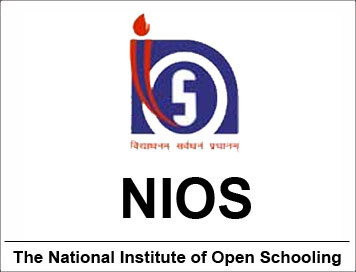(Download) NIOS Syllabus Of Accountancy Senior Secondary
Disclaimer: This website is NOT associated with CBSE, for official website of CBSE visit - www.cbse.gov.in
(Download) NIOS Syllabus Of Accountancy Senior Secondary
Accountancy
1. RATIONALE
Accountancy is an important language of business. Its knowledge has become indispensable for recording and analysing business transactions, interpreting the business results thereof and initiating future action.
The highlights of this course include:
a) the knowledge of principles and practices of financial accounting;
b) the preparation of financial statements of Trading and Non-Trading
Organisations.
c) the detailed knowledge of Accounting Vouchers prepared by business concerns;
d) the promotion of knowledge about Savings A/c, Cash Book, Pass Book, etc.
e) the provision of elementary knowledge of Computers in Accounting (to be
introduced later on)
The modules one to seven (Core Modules) have been considered essential for all
learners to study. However, the learners are expected to opt for any one module
out of two optional modules depending on his/her interests.
OBJECTIVES
This course aims at enabling the learners to:
develop skills of recording business transactions, maintaining accounts and
interpreting the results thereof
- develop skills to prepare Accounting Vouchers to increase competence for employment.
- join higher stream of accounting education.
- join professional Courses in Accounting Stream.
DISTRIBUTION OF MARKS
|
S.No. |
Core Modules |
Marks |
Time (Hrs) |
|
1 |
Introduction to Financial Accounting |
6 | 17 |
|
2 |
Accounting terms, Accounting |
6 | 16 |
|
3 |
Voucher Approach in Accounting |
12 | 40 |
|
4 |
Bank Reconciliation Statement |
6 | 15 |
|
5 |
Financial Statements |
15 | 30 |
|
6 |
Partnership Accounts |
20 | 45 |
|
7 |
Accounting for Share Capital |
15 | 52 |
|
|
Total |
80 | 195 |
|
|
Choose any one out of two |
|
|
|
8 |
Analysis of Financial Statements |
|
45 |
|
9 |
Final Accounts of Non-Trading Organisation |
20 | |
|
|
Total |
100 | 240 |
IMPORTANT NOTE FOR PAPER SETTERS AND LEARNERS
APPLICATION:
Paper setters may set questions asking journal entries for marks not exceeding 20. Such questions can be from one topic or combination of topics.
Module 1. Introduction to Financial Accounting
6 Marks
Approach
This module has been designed to introduce Accounting to learners. This module will familiarise the learners with Basic Assumptions, Concepts and Conventions of Accounting.
Prerequisite Knowledge
General idea of profit or loss, transactions.
Content Units
Unit 1. Accounting-An Introduction
Business transactions, Book-keeping, Accounting and its branches.
Nature, functions and objectives of Financial Accounting.
Unit 2. Accounting Assumptions:
Meaning, Assumptions: Business Entity, Money Measurement, Going Concern and Periodicity.
Unit 3. Accounting Concepts
Meaning, concepts: Matching, Accrual, Realisation and Dual Aspect Concept.
Unit 4. Accounting Conventions
Meaning, Conventions: Consistency, Full disclosure, Materiality, Conservatism.
Module 2: Accounting Terms, Accounting Equation and Journal:
6 Marks
Approach
This module had been designed to familiarise the students with different accounting terms, accounting equation and journal approach to accounting. This will enable them, i) to prepare Accounting equation. ii) to make journal entires for business transactions.
Pre-Requisite Knowledge
Familiarity with items of merchandise and Mathematical equation.
Content Units
Unit 1. Accounting Terms
Meaning and significance of different Accounting terms like Assets, Liabilities, Capital, Revenues and Expenses.
Unit 2. Accounting Equation
Need of Accounting equation, Meaning and preparation of Accounting equation.
Unit 3. Rules of Accounting
Meaning of Accounts, Type of Accounts: Assets, Liabilities, Capital, Revenue and Expense, Rules of Debit and Credit on the basis of Accounting Equation.
Unit 4. Journal
Meaning, classification of journal into General journal and special journals (with examples). Incorporation of journal entries involving different accounts.
Unit 5: Cash BookMeaning, types-Simple Cash Book, Two column Cash Book and
Three column Cash Book.
